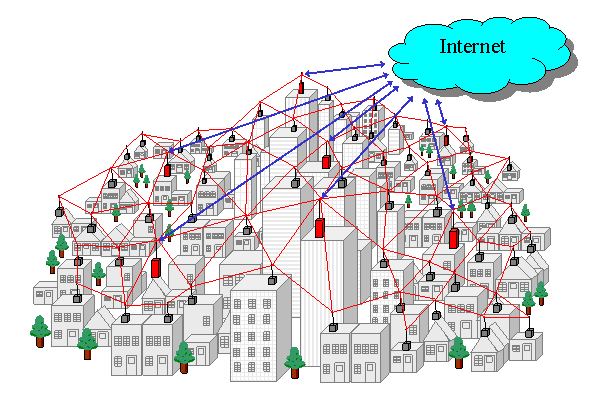Applications

- The ability to provide affordable residential broadband Internet
access to stationary customers is perhaps the most popular application
of Wireless Mesh Networks. The advantage of WMNs (over existing
technologies, e.g., cable, DSL, WMAN) in this application
are:
- Reduced upfront investments,
- Fast deployment,
- Customer coverage, and
- Reliability.
The main customers of those companies are Wireless Internet Service
Providers (WISPs) that can provide relatively inexpensive last mile
coverage, one neighborhood at a time.
- A second major application for WMNs is providing Wireless Local
Area Network coverage (WLAN). An important drawback in WLAN
deployments is the need to wire separately each access point
(AP). WMNs eliminate this drawback by allowing access points to
forward their data through other access points; in this case only one
(or a few) access points have to be connected to the wired
infrastructure, the rest just have to be plugged in a power
outlet. The main drawback of the scheme is a reduced network capacity.
Common methods of increasing the capacity include using directional
antennas, multi-radio, multi-channel, multi-band wireless nodes.
- MeshNetworks has designed its products to
optimize the Internet access for highly mobile units roaming in the
coverage area of the WMN. Its main customers are governmental
agencies (e.g., the police and/or the fire departments) in
relatively small towns.
-
Belair Networks aims to provide WLAN
coverage of medium to large buildings with a few mesh nodes placed
around the exterior of the building (interconnected using
point-to-point wireless links).
- Firetide
specializes in providing unobtrusive connectivity. Their
products form a WMN
cloud
that can be seen from outside as an
Ethernet switch: each WMN node has one (or several) Ethernet
interface(s) allowing seamless connectivity of external devices
(servers, printers, PCs, 802.11 access points, or an
Internet-connected router).
